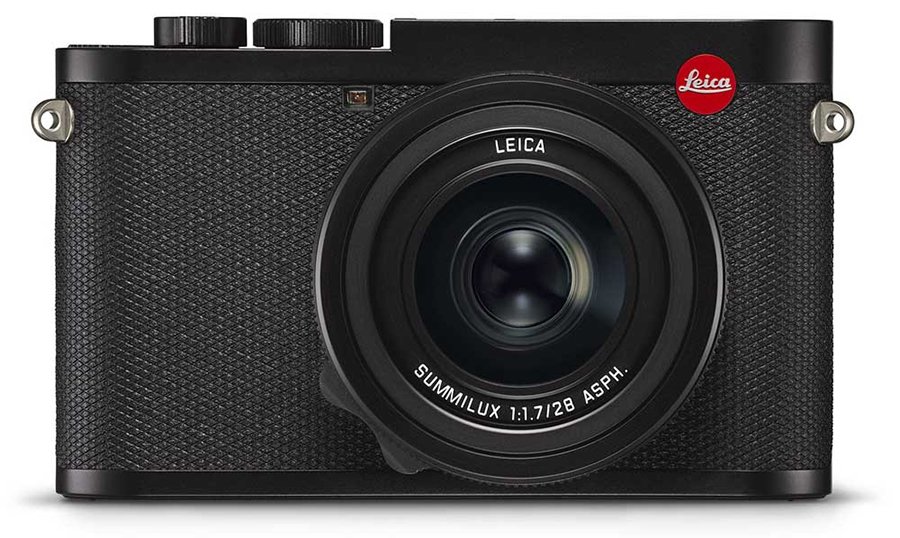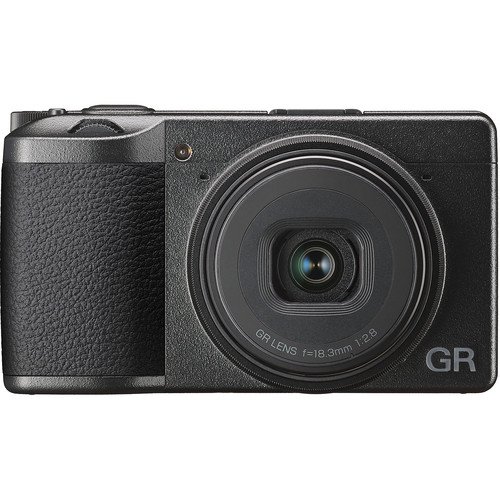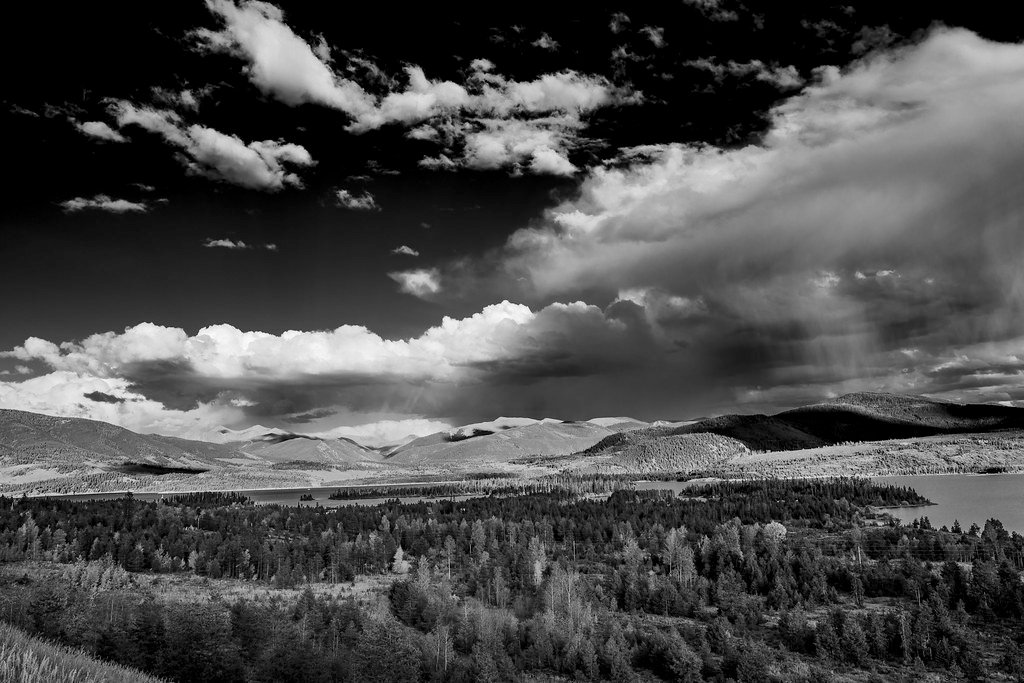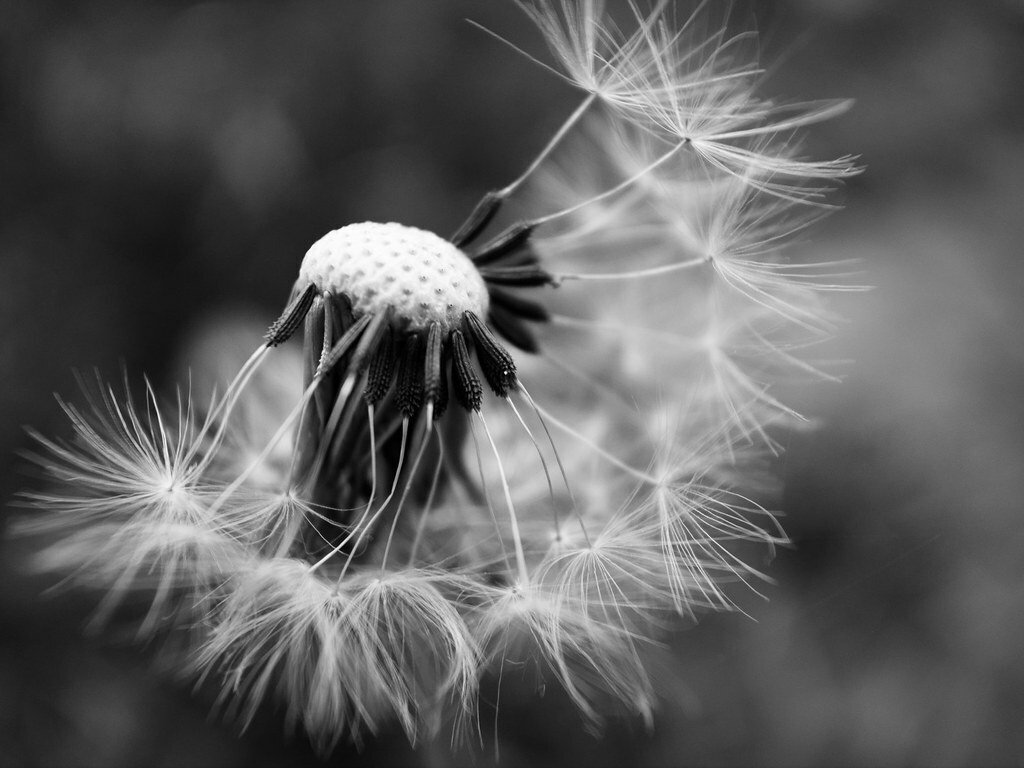It’s the battle of the 28mm. The main difference between the Leica Q2 vs Ricoh GR III is that one is a full-frame camera while the other is an APSC sensor camera that can fit in your pocket. If you are looking at the Ricoh as a Leica Q2 alternative, read this article first that highlights the similarities and differences between the two cameras. You don’t want to make the wrong decision so read and you’ll find out the best decision for you.
Leica Q2 vs Ricoh GR III: At a glance
| Name | Camera 1 | Camera 2 |
|---|---|---|
| Camera name | Leica Q2 | Ricoh GR III |
 |  | |
| Sensor size | Full Frame | APSC |
| Megapixels | 47.3 | 24.4 |
| Lens type | Fixed | Fixed |
| Lens (35mm equivalent) | 28mm | 28mm |
| Focal Length | 1.7 | 2.8 |
| Max ISO | 50,000 | 102,400 |
| FPS | 10 | 4 |
| Memory Card | SDXC Slot | SDXC Slot |
| Wireless | Wifi & Bluetooth | Wifi & Bluetooth |
| Dimensions | 5.1 x 3.1 x 3.6 inches | 4.3 x 2.4 x 1.3 inches |
| Weight | 1.58 lb / 718 g | 0.56 lb / 257 g |
| Positives | + Compact + Full frame + Rangefinder style + Fast lens | + Smallest APSC camera + Really great IQ + 1/5th Cheaper then Q2 + Fast lens + Snap focus |
| Negatives | – Fixed lens – Pricier then A7RIV | – Only 2.8 lens |
| Where to get | Check For Best Price | Check For Best Price |
The Leica Q2 was launched in March 2019, and Ricoh GR III was introduced in February 2019, so for all intents and purposes, these are close brothers in terms of technological time. So without further adieu, let’s look at who wins when you put the Leica Q2 vs Ricoh GR III head to head. Let’s dig right in.
Leica Q2 vs Ricoh GR III: What are the similarities?
Here’s what’s common about both cameras
1. Both have large sensors
This is an important point, both cameras have large sensors built in. It is not a point and shoot vs a compact camera but a large sensor vs a large sensor camera. The Q2 looks, feels and weights like a large sensor camera while the Ricoh GR III could pass for a small sensor camera, but that would be underestimating it. Why? Because it is one of the smallest large sensor cameras you can get.
2. Both have a sharp, fast 28mm
Both have a 28mm focal length. The lenses are fixed so you cannot change it, but the lenses are also fast. So both cameras are serious compact cameras with large sensor and fast 28mm lens.
Leica is known for their sharpness but Ricoh also. While the camera business is not their main business, Ricohs have been around for decades and their film cameras are still sought after for their sharpness. So GR also means sharp lenses.
![11 Best Handpicked Leica Q2 alternatives [2020] [Sample images] 18 ricoh gr iii sample image 1](https://reddotcamera.net/wp-content/uploads/2020/11/ricoh-gr-iii-sample-image-1.jpg)
3. They Both have a few minimal features in common
The large sensor, 28mm lens and compact body are what makes the Leica Q2 vs Ricoh GR III a fair comparison. But there’s also a few things in common like the Wifi, Bluetooth connectivity and the fact that both have a touchscreen although it is fixed.
While flip screens are nice to have, the truth of the matter is they quickly become the weakest link in a camera and the lack of them can be a strength to the camera’s durability.
Besides these, there are more differences than similarities when it comes to the Leica Q2 vs Ricoh GR III, we highlight them below.
4. They both lack built in flash
Let’s not mince words, built in flashes usually suck, but they are always good to have for a little fill flash here and there or the odd flash street shot. Both cameras lack internal flash so your will have to get one either way for either camera.

Leica Q2 vs Ricoh GR III: What are the differences?
The following are some of the significant differences between the Leica Q2 vs Ricoh GR III
1. One of them is outclassed
Both of these cameras are large sensor cameras but the Leica Q2 outclasses the Ricoh GR because it is a full frame sensor while the GR is an APSC camera. What does that mean? Better better low light performance and higher image quality.
There’s just no contest when it comes to larger sensor, they always win. Also The sensitivity range of Leica Q2 is up to ISO 50,000. In contrast, the sensitivity range of Ricoh GR III is to ISO 102400.
The drawback of a larger sensor however is size, bringing us to the next point.
WINNER: Leica Q2

2. You can put one in your pocket
Photography, and life in general if you want to think about it is all about tradeoffs. The Leica Q2 is a full frame camera but the downside of this is, it is laughably bigger then the Ricoh GR III. There is no way the Q2 can fit in your pocket while you can take the Ricoh GR III everywhere with you.
This is crucial because that means you do not need to compromise image quality by pulling out your phone, and you are always ready. The Leica Q requires you to take your bag with you if you want it at all times.
Plus the size brings attention while if you do street photography the GR simply looks like a regular point and shoot, making it the stealthier option.
Winner: Ricoh GR III
![11 Best Handpicked Leica Q2 alternatives [2020] [Sample images] 19 ricoh gr iii sample image 2](https://reddotcamera.net/wp-content/uploads/2020/11/ricoh-gr-iii-sample-image-2.jpg)
3. There’s a slower lens on one of them
Indeed when it comes to the Leica Q2 vs Ricoh GR III both cameras have the same 28mm field of view, even on difference sensors. But the Ricoh GR lags behind the Leica with a f2.8 lens versus the Q2’s f1.7 lens.
So if you are going to do night photography the Q2 is much better suited for this not only for the extra stop of light but also because of the larger sensor.
WINNER: Leica Q2
4. Leica Q2 vs Ricoh GR III: One is much better at Bokeh
If you are looking for Bokeh, out of focus prowess, the Leica Q2 is unmatched. That’s the benefit of having a full frame sensor and faster lens. The bokeh on the Leica is quite beautiful and the Ricoh GR simply cannot match this with a smaller sensor and slower lens. So if you want your blurry Bokehlicious backgrounds, the Leica Q2 is the way to go.
WINNER: Leica Q2
![Best 7 Leica cameras for street photography [With sample images] [2020] 12 Leica q2 street photography](https://reddotcamera.net/wp-content/uploads/2020/08/Leica-q2-street-photography.jpg)
5. This camera is MUCH better at macro
Leica Q2 vs Ricoh GR III is the battle of the 28mm. If you are looking at the Ricoh as a Leica Q2 alternative, read this article first that highlights the similarities and differences between the two cameras. You don’t want to make the wrong decision so read and you’ll find out the best decision for you.
![11 Best Handpicked Leica Q2 alternatives [2020] [Sample images] 21 ricoh gr iii sample image 4](https://reddotcamera.net/wp-content/uploads/2020/11/ricoh-gr-iii-sample-image-4.jpg)
Leica Q2 vs Ricoh GR III: What are the similarities?
Here’s what’s common about both cameras
1. Both have large sensors
This is an important point, both cameras have large sensors built in. It is not a point and shoot vs a compact camera but a large sensor vs a large sensor camera. The Q2 looks, feels and weights like a large sensor camera while the Ricoh GR III could pass for a small sensor camera, but that would be underestimating it. Why? Because it is one of the smallest large sensor cameras you can get.
2. Both have a sharp, fast 28mm
Both have a 28mm focal length. The lenses are fixed so you cannot change it, but the lenses are also fast. So both cameras are serious compact cameras with large sensor and fast 28mm lens.
Leica is known for their sharpness but Ricoh also. While the camera business is not their main business, Ricohs have been around for decades and their film cameras are still sought after for their sharpness. So GR also means sharp lenses.
3. They Both have a few minimal features in common
The large sensor, 28mm lens and compact body are what makes the Leica Q2 vs Ricoh GR III a fair comparison. But there’s also a few things in common like the Wifi, Bluetooth connectivity and the fact that both have a touchscreen although it is fixed.
While flip screens are nice to have, the truth of the matter is they quickly become the weakest link in a camera and the lack of them can be a strength to the camera’s durability.
Besides these, there are more differences than similarities when it comes to the Leica Q2 vs Ricoh GR III, we highlight them below.
4. They both lack built in flash
Let’s not mince words, built in flashes usually suck, but they are always good to have for a little fill flash here and there or the odd flash street shot. Both cameras lack internal flash so your will have to get one either way for either camera.
![11 Best Handpicked Leica Q2 alternatives [2020] [Sample images] 22 ricoh gr iii sample image 5](https://reddotcamera.net/wp-content/uploads/2020/11/ricoh-gr-iii-sample-image-5.jpg)
Leica Q2 vs Ricoh GR III: What are the differences?
The following are some of the significant differences between the Leica Q2 vs Ricoh GR III
1. One of them is outclassed
Both of these cameras are large sensor cameras but the Leica Q2 outclasses the Ricoh GR because it is a full frame sensor while the GR is an APSC camera. What does that mean? Better better low light performance and higher image quality.
There’s just no contest when it comes to larger sensor, they always win. Also The sensitivity range of Leica Q2 is up to ISO 50,000. In contrast, the sensitivity range of Ricoh GR III is to ISO 102400.
The drawback of a larger sensor however is size, bringing us to the next point.
WINNER: Leica Q2
2. You can put one in your pocket
Photography, and life in general if you want to think about it is all about tradeoffs. The Leica Q2 is a full frame camera but the downside of this is, it is laughably bigger then the Ricoh GR III. There is no way the Q2 can fit in your pocket while you can take the Ricoh GR III everywhere with you.
This is crucial because that means you do not need to compromise image quality by pulling out your phone, and you are always ready. The Leica Q requires you to take your bag with you if you want it at all times.
Plus the size brings attention while if you do street photography the GR simply looks like a regular point and shoot, making it the stealthier option.
Winner: Ricoh GR III

3. There’s a slower lens on one of them
Indeed when it comes to the Leica Q2 vs Ricoh GR III both cameras have the same 28mm field of view, even on difference sensors. But the Ricoh GR lags behind the Leica with a f2.8 lens versus the Q2’s f1.7 lens.
So if you are going to do night photography the Q2 is much better suited for this not only for the extra stop of light but also because of the larger sensor.
WINNER: Leica Q2
4. Leica Q2 vs Ricoh GR III: One is much better at Bokeh
If you are looking for Bokeh, out of focus prowess, the Leica Q2 is unmatched. That’s the benefit of having a full frame sensor and faster lens. The bokeh on the Leica is quite beautiful and the Ricoh GR simply cannot match this with a smaller sensor and slower lens. So if you want your blurry Bokehlicious backgrounds, the Leica Q2 is the way to go.
WINNER: Leica Q2
5. This camera is MUCH better at macro

If you are into close shots, or macro, the Ricoh GR is absolutely unbeatable. You won’t believe how close you can get to your subjects! In normal mode you can shoot closer with the Ricoh (3.94 inches vs 11.81 inches) but once you pop macro mode you can get as close as 2.36 inches (vs 6.69 inches for the Leica). When it comes to the macro of Leica Q2 vs Ricoh GR III, you can get 3x as close with the Ricoh and the Bokeh is quite stunning.
WINNER: Ricoh GR III
6. Leica Q2 vs Ricoh GR III: One as a special focus mode
![11 Best Handpicked Leica Q2 alternatives [2020] [Sample images] 23 ricoh gr iii sample image 6](https://reddotcamera.net/wp-content/uploads/2020/11/ricoh-gr-iii-sample-image-6.jpg)
This is mostly if you want to do street photography with either one of the cameras. The Leica Q2 can be zone focused easily by looking at the lens markings. Your see the aperture, put it at a certain distance and voila, anything from 1 meter to 10 meters might be in focus.
While there are no lens markings on the Ricoh’s body, there is one powerful mode that makes it a must have for street photographers: Snap focus. Let me explain.
The Ricoh has a snap focus mode that is essentially a shortcut to (for example) 1 meter. When it is in snap focus mode, the lens automatically focuses at 1 meter and with a sufficient aperture like f8 you can have everything from 1 meter on to be in focus.
But further more you have the “full press snap option” that makes this a game changer. So if you are in the streets, you can shoot by half pressing the shutter release and the camera autofocuses like it normally does. But if instead of half pressing you push down the shutter release completely, your focus (instead of autofocusing) goes directly to your preset distance (like 1meter).
So you essentially have two shooting modes that you can change to at all times on the fly. This is an absolute game changer for street photographers and only Ricoh has this feature.
WINNER: Ricoh GR III
7. There is no weather sealing in one of them
If it rains, you better want to put your Ricoh GR III back in your pocket because it is not weather sealed. The Leica Q2 is. Does it matter? It really depends on you. It is always great to have weather sealing in case it rains but if you don’t shoot in particularly rough situations, this is a non issue, simply put the camera in your pocket or bag for protection against the element.
Winner: Leica Q2
8. One lacks a viewfinder
![11 Best Handpicked Leica Q2 alternatives [2020] [Sample images] 24 ricoh gr iii sample image 7](https://reddotcamera.net/wp-content/uploads/2020/11/ricoh-gr-iii-sample-image-7.jpg)
The Leica Q2 has an electronic viewfinder with 3680k dots, while the Ricoh GR III depends on a rear LCD or live view for framing. This is a big deal in direct sunlight.
If you’ve ever pulled out your phone during the bright sun outside and couldn’t see much, you can have an idea of the issue. There are quite a few 28mm viewfinders however that you can get and put on the GR III’s hotshoe.
WINNER: Leica Q2
9. One is better at video than the other
Leicas are usually not the cameras for people who want to shoot videos. But here, ironically it is BETTER at video then the GR III.
The Q2 can go up to 4k video at 30fps while the Ricoh is limited to 1080p at 60 fps. Both cameras are not made for serious video as as both lack external microphone input and other features for more serious videography.
WINNER: Leica Q2
![Best Leica cameras for portraits [With sample images] [2020] 13 Leica q2 portrait 3](https://reddotcamera.net/wp-content/uploads/2020/08/Leica-q2-portrait-3.jpg)
10: Leica Q2 vs Ricoh GR III’s Design and weight
When it comes to the Leica Q2 vs Ricoh GR III’s looks, they couldn’t be more different. The Q2 is more of a rangefinder look and operation while the GR is more point and shoot in terms of operation. The strength of the GR being so small is that you can easily get all sorts of odd angles with your camera while the heaviness of the Q2 makes that harder.
When it comes to the numbers with the Leica Q2 vs Ricoh GR III, the Leica Q2 is 35 percent larger and 64 percent heavier than the Ricoh GR III.
- Leica Q2: 5.1 x 3.1 x 3.6 inches and weights 1.58 lb (718 g)
- Ricoh GR III: 4.3 x 2.4 x 1.3 inches and weighs 0.56 lb (257 g)
Leica Q2 also features weather-sealing and dust resistant ability so that you can use it in harsh and severe weather conditions. In comparison, this feature is absent in Ricoh GR III. So who wins? Both, it just depends on what style of camera you prefer.
WINNER: Tie
![11 Best Handpicked Leica Q2 alternatives [2020] [Sample images] 20 ricoh gr iii sample image 3](https://reddotcamera.net/wp-content/uploads/2020/11/ricoh-gr-iii-sample-image-3.jpg)
11. This Convenient feature is missing in one
Leica Q2 supports UHS-II cards, which offer high-speed data transfer of 312 MB/s, while Ricoh GR III supports UHS-I cards, which offer high-speed data transfer of 104MB/s. This difference is minimal for most, but important for pros.
Both the cameras also provide a hot shoe port, internal microphone, internal speaker, WIFI support, and Bluetooth support. So you can record and hear back your videos, and transfer your images to an app.
But one convenient feature that is missing in the Leica Q2 vs Ricoh GR III comparison is the lack of USB Cable in the Leica Q2. You have to pull out the battery to charge it while the GR III can be charged with your phone’s cable if you use an android phone.
The lack of extras needed for the GR III and it’s size make it an attractive, zen-like camera to have.
WINNER: Ricoh GR III
12. One has a secret weapon
On the Leica Q2 there is a small button near the viewfinder. If you press it the 28mm can become a 35mm, 50mm and 75mm. No it’s still a fixed lens camera but it crops the image so that it effectively becomes multiple focal lengths. The 75mm is only a 6.6 megapixel file but the 50mm is a more than enough 14.6 megapixels.
When it comes to the Leica Q2 vs Ricoh GR III, the Q2’s digital zoom makes it very attractive. The Ricoh GR too has a digital zoom but with the 20 megapixel sensor can only make it go to 50mm and a much smaller file of about 9 megapixel.
WINNER: Leica Q2
13. Leica Q2 vs Ricoh GR III: The price
There’s no two ways about it, if you care about price, the Leica Q2 is a whole pie while the Ricoh GR is simply a slice of that pie. It is 80% less than a Leica Q2. So if you really care about budget there is no contest between the Leica Q2 vs Ricoh GR III, the GR III wins.
However if you’ve always wanted a Leica the Q2 is essentially a $15,000 Leica kit for about 1/3 of the price, so it’s pretty affordable when it comes to Leica cameras.
WINNER: Ricoh GR III
| Camera 1 | Camera 2 |
|---|---|
| Leica Q2 | Ricoh GR III |
 |  |
| Check For Best Price | Check For Best Price |
Leica Q2 vs Ricoh GR III: How to chose
Now that you have seen the Leica Q2 vs Ricoh GR III comparison, how do you chose the best camera for you? The first question you need to ask yourself is what kind of photography you want to do. If you are a dedicated street photographer and are attracted to either camera because of the 28mm, the Ricoh GR is by far the best camera for the job.
The portability and unique snap focus feature makes it the go-to camera for photographers worldwide. However if you are more into other types of photography like portraits and more, the affordable full-frame Leica Q2 is the recommended one.
The Ricoh GR III is specifically made for street photography so only the hardcore will make the most of it, so for everyone else the Leica Q2 might very well be the only camera you will ever need with full frame quality and fast lens.